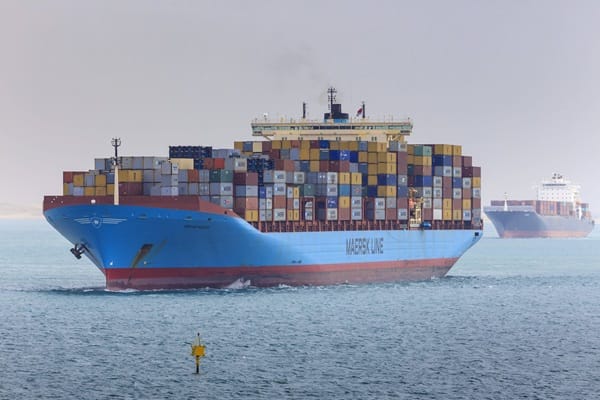The global shipping industry is a vast and interconnected network, responsible for moving goods between continents and supporting the world economy. Every day, thousands of ships navigate international waters, docking at ports in different countries, each with its own language, regulations, and operational procedures. In such a complex environment, standardised communication is not just helpful—it is essential.
From coordinating cargo operations to ensuring maritime safety, the ability to communicate clearly and consistently can mean the difference between smooth sailing and costly disruptions. The use of standardised shipping words and internationally recognised protocols helps prevent misunderstandings, improve efficiency, and enhance safety in ports and on the open sea.
The role of communication in global shipping
Shipping is an industry that requires coordination between multiple stakeholders, including ship crews, port authorities, customs officials, and logistics providers. Given the diversity of nationalities and languages in the maritime workforce, communication barriers are a common challenge. Without clear, standardised communication, delays, accidents, and financial losses can quickly follow.
Key areas where communication plays a vital role include:
- Navigational Safety – Clear instructions between ships, pilots, and control towers help prevent collisions and ensure safe passage through busy waterways.
- Port Operations – Efficient communication between vessels and port authorities ensures smooth docking, cargo unloading, and refueling.
- Regulatory Compliance – Customs and immigration procedures require precise documentation to avoid legal issues and delays.
- Emergency Response – In cases of mechanical failure, extreme weather, or security threats, standardised distress signals and protocols help ensure a rapid and effective response.
Without an agreed-upon framework for communication, misunderstandings can cause serious disruptions in these critical areas of maritime operations.
The need for standardised shipping words
One of the most effective ways to ensure smooth communication in international shipping is through the use of standardised shipping words and phrases. Maritime English, a globally accepted version of English tailored to the shipping industry, is widely used to bridge language gaps and ensure clarity.
The Standard Marine Communication Phrases (SMCP), developed by the International Maritime Organization (IMO), provide a structured set of terms for use in routine and emergency maritime communication. These phrases help seafarers from different backgrounds convey information clearly and avoid the confusion that could arise from language differences or misinterpretations.
Some examples of standardised shipping words include:
- “Stand by on Channel 16” – A common radio instruction used to indicate that communication should continue on a specific frequency.
- “Affirmative” / “Negative” – Clear responses to confirm or deny instructions, reducing the chance of miscommunication.
- “Pilot on board” – Used to indicate that a port pilot has boarded the vessel to assist with docking procedures.
- “Not under command” – A phrase used to inform other vessels that a ship is unable to maneuver due to mechanical failure or another issue.
By adhering to these standardised phrases, shipping professionals ensure that critical information is conveyed accurately, even when crews come from different linguistic backgrounds.
How standardised communication improves efficiency
Beyond safety, effective communication also enhances efficiency in port operations and supply chain logistics. When ships arrive at a port, a series of coordinated actions must take place, including customs clearance, cargo handling, and refueling. Miscommunication at any stage can lead to costly delays and inefficiencies.
For example, a misinterpretation of docking instructions could lead to a vessel arriving at the wrong berth, forcing port operators to rearrange schedules and causing congestion. Similarly, errors in cargo documentation due to inconsistent terminology can result in customs hold-ups, affecting supply chains and leading to financial losses.
By using standardised shipping words and clear communication protocols, ports and shipping companies can:
- Reduce turnaround times by ensuring that vessels dock, unload, and depart efficiently.
- Minimise errors in cargo handling, customs clearance, and documentation.
- Enhance cooperation between multinational crews, port staff, and logistics providers.
- Improve safety and reduce risks by ensuring that all parties involved understand critical instructions.
As global trade continues to grow, the importance of streamlined communication in shipping operations cannot be overstated.
The role of technology in standardised communication
Technology has played a crucial role in improving communication within the shipping industry. Digital systems and automated platforms have helped standardise messages, reducing reliance on verbal exchanges that may be prone to misunderstandings.
Some of the most impactful technological advancements include:
- Electronic Data Interchange (EDI) – This system allows shipping documents, including cargo manifests and customs declarations, to be shared electronically in a standardised format, reducing paperwork and errors.
- AIS (Automatic Identification System) – This tracking system enables ships to communicate their position, speed, and destination to other vessels and port authorities in real time, improving navigational safety.
- AI-Powered Translation Tools – Advanced translation software helps bridge language gaps between international shipping crews and port officials.
- Blockchain in Shipping Documentation – The use of blockchain technology is improving transparency and security in shipping documents, ensuring that information is standardised and tamper-proof.
While human expertise remains crucial in maritime communication, these technologies help reduce the risk of errors and improve efficiency in global trade.
Standardised communication in emergency situations
In addition to routine operations, standardised communication is essential in emergency situations at sea. Whether responding to extreme weather conditions, onboard fires, or medical emergencies, seafarers must rely on internationally recognised distress signals and emergency phrases.
Some of the most critical standardised maritime distress signals include:
- “Mayday” – A universal distress call used when a vessel is in grave and immediate danger.
- “Pan-Pan” – Used for urgent situations that are not immediately life-threatening but still require assistance.
- “Securité” – A safety message broadcast to alert nearby ships of potential navigational hazards, such as extreme weather or floating debris.
Without these standardised distress calls, valuable time could be lost during emergencies, putting lives and cargo at risk.
Conclusion
In the global shipping industry, clear and consistent communication is fundamental to safety, efficiency, and regulatory compliance. The use of standardised shipping words, Maritime English, and structured communication protocols ensures that ships, ports, and logistics teams can work together seamlessly, regardless of language barriers.
As technology continues to evolve, digital tools and automated communication systems will further enhance standardisation in the industry. However, human communication skills remain essential, and adherence to established maritime phrases and protocols will always be a cornerstone of safe and efficient shipping operations.
From port to port, standardised communication is what keeps the global supply chain moving—ensuring that goods arrive on time, operations run smoothly, and international trade continues to thrive.






Leave a Comment